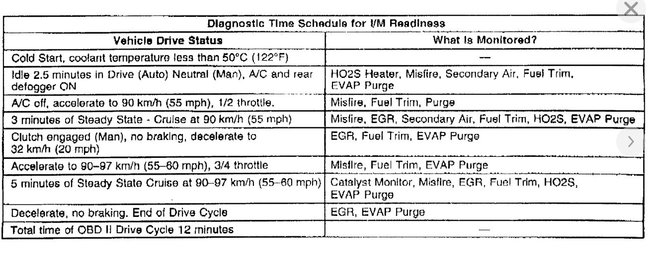Good morning.
Did you clean the passages when you remove the check valve?
Roy
CIRCUIT DESCRIPTION
The Secondary Air Injection (AIR) pump used on this vehicle lower tail pipe emissions during start-up. The AIR system consists to the following items:
The AIR pump
The shut-off valves
The vacuum control solenoid valve
The system hoses and piping
The AIR relay, the fuses, and the related wiring
The Powertrain Control Module (PCM) uses the AIR relay in order to control the AIR pump. The PCM also controls the AIR vacuum control solenoid valve that supplies vacuum to the AIR shut-off valves. With the AIR system inactive, the AIR shut-off valves prevent air flow in either direction. With the AIR system active, the PCM applies ground to the AIR relay, and the vacuum control solenoid valve. Fresh air flows from the pump, through the system hoses, past the shut-off valves, and into the exhaust stream. The air helps the catalyst quickly reach normal working temperature; thus lowering the tail pipe emissions on a start-up. The PCM tests the AIR system for the following conditions:
AIR System (Overall system including both banks, and results in DTC P0410)
AIR System Bank 1 (DTC P1415)
AIR System Bank 2 (DTC P1416)
AIR Relay (DTC P0418)
AIR Vacuum Control Solenoid (DTC P0412)
The PCM runs two tests to diagnose the AIR system: Passive, and Active. Both tests involve a response from the fuel control H02 sensors (HO2S Bank 1 Sensor 1 and HO2S Bank 2 Sensor 2). If both passive tests pass, the PCM takes no further action. If either part of the passive test fails, or is inconclusive, the PCM initiates the Active tests. If the PCM determines that the HO2S voltages did not respond as expected during the tests, the DTC will set. For further information concerning the AIR System and system tests, refer to Secondary Air Injection (AIR) System Description.
CONDITIONS FOR RUNNING THE DTC
Passive Tests
The engine is running.
The engine speed is more than 600 RPM.
The throttle is steady.
The engine load is less than 80 percent.
The system voltage is more than 10.5 volts.
The Mass Air Flow (MAF) is less than 35 g/s.
The air/fuel ratio is more than 12.5:1.
The Engine Coolant Temperature (ECT) is between 5-110°C (41-230°F).
The Intake Air Temperature (IAT) is between 5-60°C (41-140°F).
The power enrichment, or deceleration fuel cut-off is not active.
Active Tests
The engine is running.
The engine speed is more than 600 RPM.
The throttle is steady.
The engine load is less than 80 percent.
The system voltage is more than 10.5 volts.
The MAF is less than 35 g/s.
The fuel system is in closed-loop operation.
The EVAP purge is active.
The ECT is more than 68°C (154°F).
CONDITIONS FOR SETTING THE DTC
Passive Tests
During the operation of the AIR pump, the HO2S voltage for both fuel control sensors is above 250 mV for 20 seconds (200 mV for 7 seconds on a hot start).
When the AIR pump is turned OFF, the HO2S voltage for both fuel control sensors is below 740 mV for 20 seconds (7 seconds on a hot start).
The condition is present for 3 occurrences.
Active Test
The HO2S voltage for both fuel control sensors is above 250 mV for 3 occurrences.
ACTION TAKEN WHEN THE DTC SETS
The control module illuminates the Malfunction Indicator Lamp (MIL) on the second consecutive ignition cycle that the diagnostic runs and fails.
The control module records the operating conditions at the time the diagnostic fails. The first time the diagnostic fails, the control module stores this information in the Failure Records. If the diagnostic reports a failure on the second consecutive ignition cycle, the control module records the operating conditions at the time of the failure. The control module writes the operating conditions to the Freeze Frame and updates the Failure Records.
CONDITIONS FOR CLEARING THE MIL/DTC
The control module turns OFF the Malfunction Indicator Lamp (MIL) after 3 consecutive ignition cycles that the diagnostic runs and does not fail.
A current DTC, Last Test Failed, clears when the diagnostic runs and passes.
A history DTC clears after 40 consecutive warm-up cycles, if no failures are reported by this or any other emission related diagnostic.
Use a scan tool in order to clear the MIL and the DTC.
DIAGNOSTIC AIDS
NOTE: Refer to Connector Test Adapter kit J 35616-A Notice in Service Precautions.
Reviewing the Failure Records vehicle mileage since the diagnostic test last failed may assist in diagnosing the condition. The information may help determine how often the condition that set the DTC occurs.
Thursday, August 30th, 2018 AT 1:58 AM



